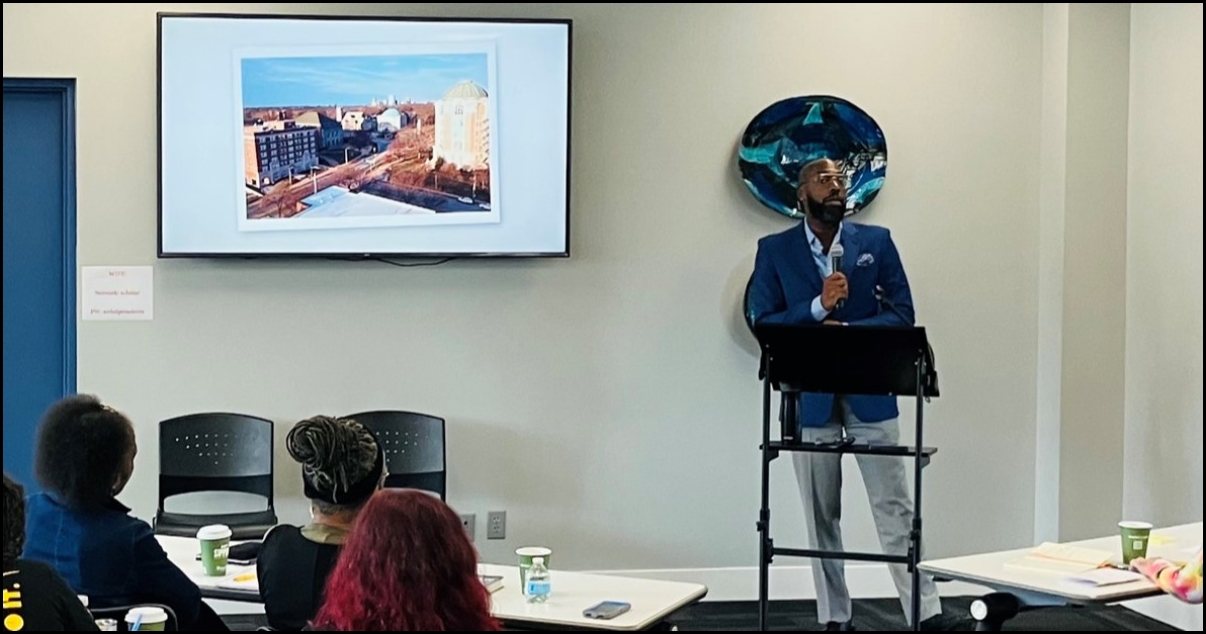 It already wasn’t fair.
It already wasn’t fair.
Affirmative action on the basis of race in admissions ended with the late June decision of the United States Supreme Court. Public mourning of “Affirmative Action” (as though it were a person who had lived a good, long life) was announced widely. While some celebrated the end, much sadness ensued among those who believed that the tools created in the name of affirmative action were being used for good and that remedies had just not been given enough time.
Assumptions were quickly made that entire departments of diversity, equity, and inclusion at institutions and corporations would now shutter. Some began frantically searching and publicly auditing for the reclaimed prominence of the white male, the one they felt was endangered by public policy they consider unfair.
Most who ask me about the decision have not read it. If that includes you, I suggest a thorough reading, so that you can critique what you read in the press and see in the behaviors of institutions. You will find it here: U.S. Supreme Court Decision, STUDENTS FOR FAIR ADMISSIONS, INC. v. PRESIDENTS AND FELLOWS OF HARVARD COLLEGE
A collective lamentation has become common in the days since the decision….
“I do not recognize my own country anymore. How did we get here?!”
I think you know, but I write with reminders. There is a long history in land, law, and economics that undergirds higher education since its inception on this continent. Sad to say, but economic and governmental interests have almost always best served those white in complexion. Higher education institutions have responded to and furthered those interests in their land use, displacement of Black communities, policing practices on and off campus, and research contracts benefitting private interests sheltered by institutional tax-exempt status (for more, read In the Shadow of the Ivory Tower: How Universities Are Plundering Our Cities by Davarian L. Baldwin).

Dr. Davarian Baldwin, leading urbanist, historian, cultural critic, and professor at Trinity College joined Scholarship Foundation board and staff members, policy fellows, and community partners for a half-day seminar on September 16, 2023.
Land. Higher education in the U.S. began as an elite and private purchase. The labor used to build campuses and the wealth required to enroll were rooted in slavery (for more, see Craig Steven Wilder’s 2013 Ebony and Ivy: Race, Slavery, and the Troubled History of America’s Universities). In large part, significant wealth is still required to attend highly selective schools (thus legacy/development admits are common).
The Morrill Act of 1862 used land seized from indigenous people to generate funds to fortify the business of agriculture, since the business of slavery was no longer a readily available source of capital (for more, see An Indigenous Peoples’ History of the United States by Roxanne Dunbar-Ortiz). Note that amendments to the Morrill Act were later necessary to establish that states must provide for post-secondary education of Black students (1890) and tribal colleges are entitled support (1994).
Economics. The start of the 20th century saw accelerated stratification of college attainment by both wealth and race. College admissions testing, beginning with the SAT in 1926 and buffeted by ACT in 1959, fueled the sorting of students. These instruments were and still are said to be objective measures of academic merit, though scholars have long argued the tests suffer from cultural bias and lack sensitivity to multiple forms of intelligence. Regardless, admissions and financial aid practices were built on the premise that the test score is an adequate means of separating students by ability and likelihood of success. Though some colleges are now “test optional”, enrollment management practices engage other ways to sort by wealth (which is the demographic factor still most closely correlated with test scores).
The end of World War II and the launch of Sputnik opened an era in which post-secondary education was cast as a necessary national investment and essential line of public defense. The GI Bill provided education benefits toward the common good, yet Black men found that local distribution of federal funds through the GI Bill left plenty room for Jim Crow laws and other forms of overt racism to obstruct opportunity.
President Johnson’s Great Society era produced legislation designed to redress harm caused by the intersections of race and class (including civil rights, voting rights, and financial services). “Affirmative Action” (not a proper noun but often cited as one) refers to a range of practices of schools and employers in which inequities based on race or gender are to be addressed through compensatory or remedial action. The Higher Education Act of 1965 directed money to low-income students, reinforcing the notion that a healthy democracy depends upon an educated society. In fact, the nation’s primary need-based financial aid (now known as the Pell Grant) and federally subsidized student loans were born in this era. Then as now, poverty was not exclusive to but was more often concentrated in greater proportion in Black and Brown communities.
And thus, it was not too long after passage of the Higher Education Act, that white people began filing lawsuits challenging actions designed to repair harms done by discrimination on the basis of race at the collegiate level, claiming discrimination against whites and insisting that “merit” must be the sole deciding factor. The assertion that wealth is unrelated to “merit” was persistent before the Johnson era but became more insidious in the years of President Reagan’s term. The early 1980s spawned college rankings and startling price increases. The federal government stepped back. Need-based aid shifted from grants to loans. At the same time, a “college access” movement began and a countermovement of “college isn’t for everyone” soon followed. In many ways, the nation has perpetuated this era of sorting by wealth and offering education as a commodity for purchase ever since.
Law. Admissions is all about sorting, and in the cases before the United States Supreme Court the stakes were high for a proportionately small but powerful segment of the population. Defendants in the cases are elite institutions where admissions decisions, like hiring, imply a particular economic status and outcome. For quite some time, elite institutions have used “affirmative action” to conflate and confound race and class, obfuscating how the two interact in society and in admissions. Most elite schools have directed their affirmative action efforts toward competing to attract a statistically small number of very wealthy minority students.
The court has ruled that race-based selection is impermissible, but need-based is not. Admission on the basis of wealth is not prohibited, as legacy and “development” admissions continue unchecked. Likewise, though, admission and scholarships can be awarded on the basis of financial need. The court further and directly acknowledges that a student’s economic condition may be adversely affected by past discrimination on the basis of race.
Immediately after the decision, all students of The Scholarship Foundation received a letter reinforcing their standing with the Foundation as solid and our policies and practices of awarding do not contradict the recent Supreme Court ruling. Further, that letter to our students outlined the actions that The Scholarship Foundation would not only continue but strengthen to support our students in confusing times on campus.
“So what happens next?”
In the three months after the ruling was issued, the spin is predictably polarizing with state attorneys and institutions determining that scholarships and outcomes show no favor beyond “merit”, said to be objectively measured. Elite institutions have already readjusted and repackaged their admissions and financial aid policies to protect their price points and rankings, on which they generate so much economic and political power (for more, see the digest of New York Times publications on the topic which is appended to this post).
Suffice it to say that the students of The Scholarship Foundation of St. Louis are attending colleges which, on average, cost $32,000 per year to attend and come from families who, on average, can contribute just $2,400 toward that cost. Contrast that with the elite university in St. Louis which is priced at $85,000 annual cost of attendance at which 21% of the students come from the top 1% of the wealth distribution in this nation. Our students do not attend the schools represented by the defendants in this case nor are they among the people who had an incentive to file the lawsuits in the first place.
Meanwhile, higher education in the 21st century United States continues to bifurcate by class and race and cannot be declared an equalizer. Together, college pricing and student debt have done great harm to all but the wealthiest strata. So many have chased the dream and have gone into debt or default that was always mathematically predictable and that precludes their continued education and financial solvency. A promised and now withdrawn federal loan forgiveness program all but assures that the return to repayment next month after 3.5 years of pause will cause inestimable harm to individual lives and to any integrity the federal program had before the shutdown.
That these two Supreme Court decisions came in the same batch and in a period of such political upheaval could foster continued disaffection and a sort of final dismantling of the connection between education and democracy that many attribute to Thomas Jefferson (a slave holder). The gap between the words and the facts has become so evident and so expansive that the country could forgo the common good of fostering intellect, cultivating critical and creative thinking, and respecting the right to learn.
Or the historic links between land, law, and economy could be clipped and new ones created.
There is opportunity here for radical redesign of racist and classist systems of higher education, realigning admissions and financial aid to better serve broader community and societal purpose. The time is NOW, if not before.
(And for models that demonstrate another way, look to The Scholarship Foundation of St. Louis.)
– Faith Sandler, 2023
For more on how elite institutions have responded to recent research on the effects of wealth on admissions in light of the June 30, 2023, rulings of the United States Supreme Court, follow the reporting of the New York Times on these topics.
- With a New Formula, U.S. News Rankings Boost Some State Universities, New York Times, September 18, 2023
- Explore How Income Influences Attendance at 139 Top Colleges, New York Times, September 11, 2023
- Why Does Duke Have So Few Low-Income Students? David Leonhardt, New York Times, September 7, 2023
- Americans are Losing Faith in the Value of Higher Education: Whose Fault is That?, Paul Tough, New York Times Magazine, September 5, 2023
- Let’s Stop Pretending College Degrees Don’t Matter (Guest Essay), Ben Wildavsky, New York Times, August 21, 2023
- Study of Elite College Admissions Data Suggests Being Very Rich Is Its Own Qualification, New York Times, July 24, 2023
- How to Fix College Admissions Now, New York Times, July 5, 2023
- The Student Loan Borrowers Who Will Continue to Struggle, New York Times, June 30, 2023


